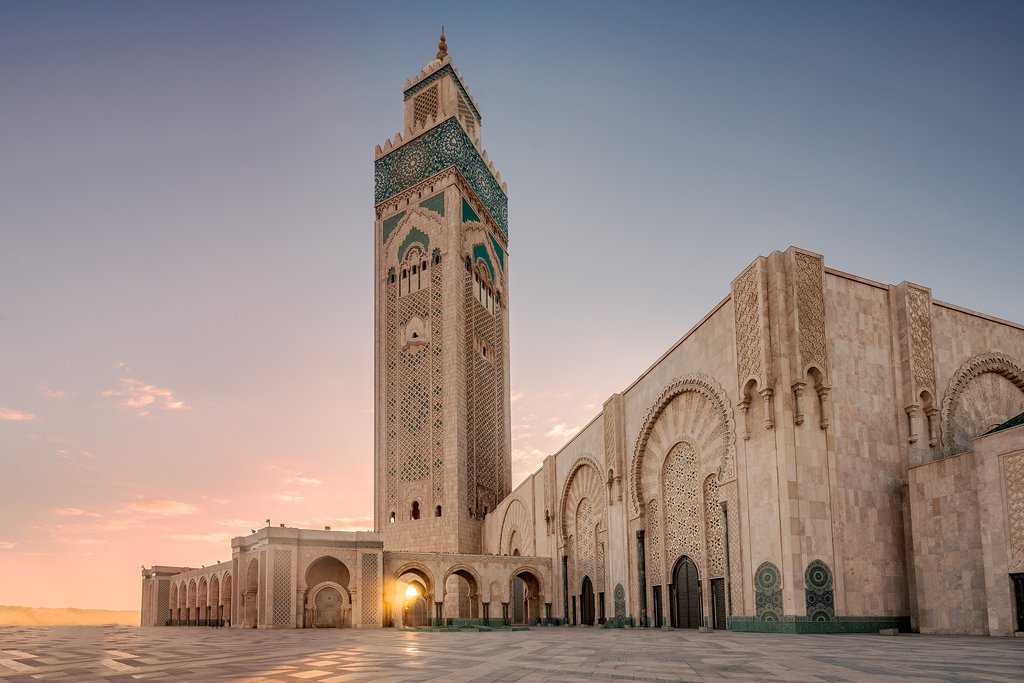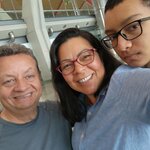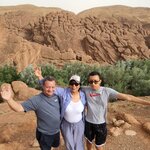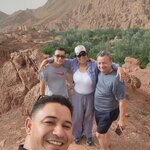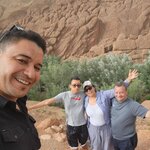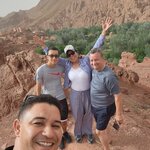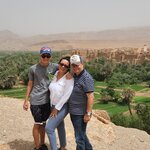Introducing Casablanca
Casablanca sits on the Atlantic Ocean in western Morocco. As the commercial, financial, and economic hub of the country, it has something for everyone, and travelers will immediately notice the strong contrast between old and new: classic Spanish architecture, mosques, and historic medinas rub shoulders with high-end boutique stores and fast food chains.
Throughout history, the city's prime location on the water made it an excellent port—and eventual cultural melting pot. Roman, Arab, Portuguese, Spanish, French, British, and Moroccan architecture is interspersed throughout the city. But Casablanca's strongest influence is still that of the native Berber and Arab populations, perhaps most evidently displayed in the tasty, spicy cuisine (think couscous, seafood, and tagine). Read on to learn how to make the most out of your visit.
Crafting Your Casablanca Itinerary

Casablanca is an ideal stopover spot on your way to other Moroccan cities like Fes or Marrakesh. Whether you have 12 hours or three days to explore, you'll be able to experience winding side streets, a symphony of honking horns and the smell of fresh spices wafting through the city.
If you only have one day in Casablanca hit the Hassan II Mosque first. This brilliantly tiled green and white mosque is a show-stopper. It's the biggest in Morocco so you could literally spend a full day exploring. However, with just a few hours use your time wisely and take a short walk to Rick's Café for lunch. Here you can sip on some tea in the recreated fictitious café Humphrey Bogart and Ingrid Bergman frequented. After, walk to the Old Medina to purchase some silk, spices, and knick-knacks before your next flight.
With two days in Morocco, you'll be able to see the city at a more leisurely pace. Instead of taking metered taxis everywhere, walk from attraction to attraction to peek into small businesses and experience life like a local. Be sure to ask your concierge which areas, if any, you should avoid. During the first day hitting the Hassan II Mosque and the historic district makes the most logistical sense.
On your second day, you can visit the Hobous or the "New Medina", another charming part of the city for souvenirs, souks, local eateries and more. Treat yourself to a traditional hammam and get rid of the city grit. Hammam Ziani is a clean, well-priced spa and hammam that caters to tourists in need of some pampering. Be sure to bring a bathing suit if you're not comfortable being nude around strangers.
If you have three days or more hit all the must-see spots in the top sights below and take a trip to the beach. Ain Diab is where the who's who of Casablanca come to swim and bask in the strong Morrocan sun. Stay at any one of the communities nearby chic hotels and walk to swimming clubs like Tahiti Beach Club or Piscine Maimi. Here you can grab a lounge chair or cabana and sip cocktails until the sun sets. Make sure you visit during the summer as most restaurants and beach clubs are closed during winter.
Casablanca is the perfect way to start or end a trip through Morocco. Get used to the jet lag before you head off to the Atlas Mountains or the Sahara Desert and recharge after you're done. Need some inspiration? This 4-day desert adventure could easily be amended to include a stay in Casablanca.
Casablanca's Top Sights

Hassan II Mosque: Casablanca's premier attraction. The largest mosque in Morocco sits on the edge of the Atlantic Ocean and includes a museum, baths, Koranic school, library, and prayer room capable of holding 25,000 people. It's ornate design, beautiful green hues, and mosaic tiles make it a picturesque spot for those of every faith. At night, it glows orange on the water as the entire building is illuminated. The Hassan II Mosque is open seven days a week and costs just 12 euros to enter. Because it is a religious site make sure to cover your shoulders, wear long pants or a skirt and a scarf around your head.

Mahkama du Pasha (Palace of the Pasha of Casablanca): On the inside, it's a building used for government purposes, but on the outside, its staggeringly elaborate design, and architecture make it a work of art. It's a perfect stop for an Instagram shot beneath an embellished doorway or arch. Unfortunately, it's very difficult to get inside because of its use as the court of justice, but if you're lucky enough to be allowed entrance, you'll see some of the city's finest furnishing, marble columns, wooden ceilings, and mosaics.
Musee Abderrahman Slaoui: This small museum in the heart of Casablanca's historic district, may look unassuming, but it is not to be missed. Inside this 40s home is wealthy Moroccan businessman, Abderrahman Slaoui's private collection of antique jewelry, art, posters, and crystals. The collection is impeccably preserved and displayed throughout three floors. The museum is open from Tuesday to Saturday from 10 am to 6 pm.

Old Medina: One of the city's remaining historic districts, here you can wander the narrow winding alleys, see remnants of ancient city walls, barter with a local shopkeeper, and peruse the unusual and often practical wares at the bazaar. Just a short walk from the Hassan II Mosque, there are dozens of quaint shops to stop for a mint tea or coffee as you watch locals bargain for fresh produce.
Chat with a local specialist who can help organize your trip.
When To Go
Due to its location on the Atlantic, it has a temperate climate like most of the United States. Summer months from May to September are the best time to visit because of the warm weather and lack of precipitation. Head there in July to experience a party or two during the Festival de Casablanca and Feast of the Throne. For more information, read on about the Best Time to Visit Morocco.
Getting There
Most international travelers coming from the United States will fly into Casablanca's Mohammed V Airport first, making it the perfect way to start or end your Morroco adventure. There are numerous international flights to Mohammed V airport from most major cities in the United States and Europe. It's just over eight hours from JFK and three hours from London.
Tha airport is located 20 miles south of the city center. You can also take a 30-minute train ride to Casa Voyageurs Station for less than $4 USD—but if you're traveling with heavy luggage, the easiest option is by taxi. Make sure to get in a red cab as these are private taxis and they are metered. Never get into an unmetered taxi, its one of the oldest tourist scams in the book.
Where To Stay
Moroccan hotels are known for their mosaic tiles, incredible service, and opulent decor. Despite Casablanca's reputation as a modern city, you can still stay in traditional hotels. One of them being Moroccan House Hotel. Here you can layout by their large outdoor pool and enjoy the Morrocan sun. The Idou Anfa Hotel & Spa, in the business district, doesn't have as much authentic Moroccan charm, but it certainly has some bright pops of color. The rooms are modern, but the hotels incredible views of the ocean and the Hassan II Mosque make it one of the cities premiere places to stay.
Where To Eat
There's no better place to try Moroccan food than in it's largest city. Known for its spices, couscous, and Meditteranean ingredients, this beloved cuisine is not for those averse to strong flavors. Inside Al Mounia, a real Moroccan salon with tiled floors and a calming garden, is some of the city's best food. Order couscous, tagine, and "pigeon pastilla" (note that these days, the dish is made with beef instead of pigeon). For a moment from the classic movie Casablanca go to the touristy Rick's Cafe, designed to look like it did in the film. Or try the city's best seafood at La Mer—open since 1918, it offers ocean views, fresh fish, and French cuisine.
Tips for Your Visit
If the Morrocan heat is getting the best of you, ride on the air-conditioned Casablanca Tramway to get where you want to go—for cheap.
Morocco is a Muslim country. To avoid unwanted stares and comments, dress modestly when out on the streets and most especially in places of worship.
Interested in visiting the (very) popular Rick's Café? Stay one step ahead of the fray by making a reservation ahead of time.
As Morocco's largest city, traffic in Casablanca can be an issue. It's important to strategically plan where you're staying and the places you'd like to visit to make the most out of your time.
For more information on visiting Morocco, take a look at these great travel insights.
